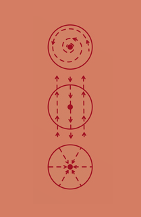Breast Cancer Awareness - How To Self-Examine?
Follow Dr Raksha Suvarna on
Follow Dr Raksha Suvarna on

Summary
Introduction
Breast cancer is the commonest (32%) of all cancers and is the second common cause of cancer deaths impacting 2.1 million women each year. Breast cancer is considered to be a disease of the developed countries, but 50% of breast cancer cases and 58% of deaths occur in less developed countries. Usually, cancer survival rates vary greatly worldwide. Screening can detect breast cancer at an earlier stage. Breast cancers are generally without any symptoms to start with.
High-risk factor
High-risk factors for breast cancer are early menarche, late menopause, obesity, nulliparity, late age of the first birth, never breastfed, atypical lobular hyperplasia, nipple discharge other than milk, high-dose breast or chest irradiation, high dietary fat intake, oestrogen replacement therapy, breast cancer in first-degree relative (mother, sister or daughter), cancer in the other breast, previous cancer of endometrium, ovary, colon, and hereditary breast cancer gene(Inherited mutation of BRCA 1 and BRCA 2 genes)
Screening for breast cancer
Screening should be performed for all women from 40 years of age. Screening and diagnostic methods include a complete breast examination by a physician, self-examination, breast imaging (screening mammography, diagnostic mammography, ultrasonography. Magnetic resonance imaging(MRI), Digital mammography, Positron emission tomography), breast biopsy. One of the important screening and a simple technique for early detection of breast cancer is a self-examination of the breasts. Every woman should know it and make it a habit to self examine, certainly by the age of 20. It should be done even during pregnancy and after menopause. The examination should be made on a monthly basis following the periods on day 7-10, as the breast becomes less tender and less engorged.
Early signs of breast cancer
- Change in the shape and size of the breast.
- Nipple pushing inwards.
- Nipple discharge other than breast milk.
- Puckering or dimpling of the breast skin (looks like an orange peel)
- Lump in the breast or underarm.
- Pain over the nipple area or any part of the breast.
- Breast skin appears red, flaky, or thickened.
- Swollen lymph nodes around the collar bone or under the armpit.
Simple steps for self-examination [Images]
Step 1: Find a comfortable private place, undress and stand in front of the mirror, arms resting on thighs and look for the skin, areola, nipple, sizes of breasts, and local swelling in different places. The abnormal signs like redness, soreness, rashes, dimpling, puckering or bulging of skin, nipple with changed position, or a nipple pushed inward instead of sticking out.

Step 2: Arms pressing on hips and look for the same changes.

Step 3: Lean forward to make breasts pendulous and look for the same changes.

Step 4: Arms over the head and look for the same changes.

Step 5: Now lie down on a firm surface with head on a pillow and hand under the head on the side to be examined. Examine your breast using your right hand to feel your left breast and then your left hand to feel your right breast. Use the pad of middle 3 fingers, palpate the entire breast from top to bottom and side to side in a circular motion or up and down motion. Press to feel the entire breast in three different pressure- light, medium, deep. Check for lumps and tenderness.


Step 6: Repeat step 5 in the standing position.


Step 7: Feel the armpit between the thumb and finger, look for any lump or nodule like swelling. Also, check for any swelling around the collarbone.

Step 8: Press the nipple for any abnormality or discharge like watery, milky, or bloody.

If there are any abnormal signs then don’t panic, go see a doctor. There are other tests required for evaluation. Most women have lumps or a lumpy area which might be non-cancerous. This may be possible due to hormonal changes, benign breast conditions or an injury. But don’t hesitate to call your doctor if you have noticed a lump or any abnormal discharges as it’s worrisome. Make a habit of doing self-examination of the breasts. The more you examine your breast, the more you will know about them and it will be easier to know about any abnormal changes.
Follow Dr Raksha Suvarna on
Follow Dr Raksha Suvarna on